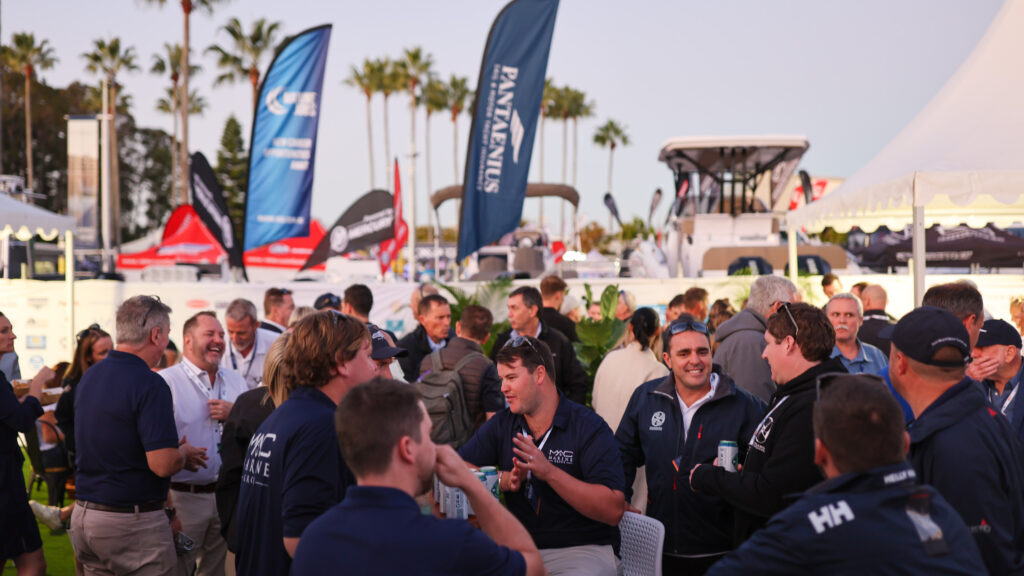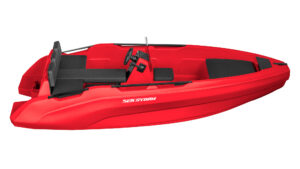How can marine industry bodies stay relevant?
 Sanctuary Cove International Boat Show © Salty Dingo
Sanctuary Cove International Boat Show © Salty Dingo
GMBA’s Maryanne Edwards reviews an Australian success story and asks how marine industry bodies need to pivot and diversify to serve their members better
The relevance of industry bodies in today’s economic environment varies significantly. Some industry bodies appear to members to have become ‘old boy networks’; some struggle to remain relevant, while others are seen as dynamic organisations that have evolved to progress the industry.
Whatever the sector represents, leadership is always a critical element for its success or demise. With the correct steerage, an industry body can create a thriving ecosystem that supports the growth, development, and success of its members and the industry as a whole.
The Australian International Marine Export Group (AIMEX) is one such organisation that has evolved and flourished. Established in 1998 to develop and promote Australia’s international competitiveness in the marine sector, it has had strong leadership that has cultivated a dynamic and adaptable way of working. Founding members and chairpersons Alistair Murray, chairman of Ronstan, and Richard Chapman, MD of Coursemaster and Hydrive Engineering, believe that visionary leadership, strong fiscal management, and a diverse board can sustain industry bodies.
Murray says: “The original goals for AIMEX were to have a united front for Australia’s marine exports – a ‘club’ if you like – and to tap into additional government support. There was a great opportunity to bring all Australian marine exporters along for the ride, with the more experienced exporters mentoring and supporting the smaller, newer companies.”

Murray adds that one of AIMEX’s greatest challenges was that it had so many small exporters that had a good idea or product but were inexperienced and underresourced meaning success in overseas markets was a step too far. Through mentorship, support and access to global markets and insights, AIMEX started many export members on their global journey.
“It’s a tough world in international business, and it’s even tougher, if not nigh impossible, to go it alone in your quest for customers, markets, and a greater, profitable market share,” continues Murray. “This is where industry bodies come into it. They are full of experienced campaigners who have been there before you and are generally more than willing to assist up-and-coming industry players in every way possible. The industry body also has a management and staff structure whose job is to support and assist you, thereby increasing the effectiveness of your team. Join forces with them and your fellow industry members to be united and more successful together.”
What drives a successful industry body?
A key attraction for businesses to join industry bodies is to be part of a group with established iconic brands. Having global brands as members adds credibility and often, they are the ones either feeding or purchasing from the supply chains that smaller businesses form part of. Chapman says: “In the early days, AIMEX’s strengths were the enthusiasm, commitment and experience of the founding members and the development of a strong relationship with the Australian government’s export arm.
“Our strength at the time was also the growing reputation of established brands like Ronstan, Muirs, Coursemaster, Steber and along the journey long-term members like Riviera, Maritimo, Aqualuma and other Australian manufacturers who were making big strides internationally.”
Smaller AIMEX members have likened the industry body to a family where members support each other and belonging gives a sense of security especially when they are small fish in the big pond of a trade show such as METSTRADE.
Given the leadership styles of both chairmen, Murray and Chapman have also actively encouraged new people to stand for the board and worked hard to ensure that passionate, visionary people and those who can commit the necessary time are those attracted to join the board. Chapman adds: “It is very important that industry boards are made up of members from a cross section of industry. Board members must make decisions that are best for their members and industry but not necessarily best for the company they represent.”
AIMEX and the superyacht sector
To survive and be recognised by governments, industry bodies must reach a critical mass. To represent industry at the government level, to have a strong financial base to operate from and to be able to deliver valuable services, an organisation needs numbers. This makes a diversification strategy for many industry bodies important. However, to take on other industry sectors or take over other industry groups there must be a common thread of relevance otherwise it will not work. Both Murray and Chapman noted that AIMEX’s weakness was really not having a critical mass of enough exporters of substance, which is why the subsequent diversifications into the superyacht and commercial worlds were necessary and successful.
In 2012, AIMEX was approached by some key superyacht industry stakeholders to include the superyacht industry under its wing with the purpose of strengthening the superyacht industry, and promoting Australia as a preferred destination for the global superyacht fleet.

At the time, this was a big decision for the AIMEX chairman and board, as AIMEX was enjoying success with a single focus in regard to exporters. However, during the global financial crisis (GFC) businesses had been finding it tough, exchange rates and other economic factors were affecting exporters and membership in this sector was starting to slow down.
The AIMEX chairman and board debated this diversification and its risks – pressure on staffing resources and the requirement to inject some funds to provide the best chance of success. Ultimately, it was seen as an opportunity to support stakeholders in the superyacht industry, expand the reach of AIMEX, increase membership numbers and create an even stronger voice to government. AIMEX subsequently expanded its board to include a superyacht industry representative and created the Australian Superyacht Committee with a focused objective agreed by all parties at the time.
In 2014 AIMEX was again approached by a number of businesses in the commercial marine sector as they felt they were not being represented loudly enough at government level. During the GFC and the downturn in many sectors of the marine industry, AIMEX and superyacht industry members had refocused their business to the commercial defence sector in an attempt to try and secure business to stay afloat. At this time, globally the defence and commercial sectors were in a better economic status than the traditional export and superyacht sectors, with governments investing heavily in this sector.
Following this approach, the AIMEX chairman called a board meeting to discuss the appetite of the board for further diversifying and expanding the AIMEX portfolio by developing a commercial marine group. The chairman and CEO put the new initiative to the board, again with considerable debate, but all ultimately agreed it could only be positive to be able to represent existing members in this industry sector further, attract new members and continue to expand the AIMEX voice to government.
The Australian commercial marine group was thus developed with a representative on the AIMEX board, their own committee of key commercial sector stakeholders and a focus on providing a much stronger voice to government for this sector and promoting the sector’s products and capabilities to the global market.
Over the past nine years, the size and credibility of the Australian Commercial Group has grown with key Australian commercial defence businesses including Austal coming on board.
Where next?
Industry bodies that maintain their relevance and elect strong leaders will survive and thrive. The marine industry, like many industry sectors, is constantly evolving with new technology, new government regulations, changing economic conditions, plus environmental and sustainability issues driving many changes. Industry bodies need to represent members’ interests across all these issues. Old boys’ networks and egos must be a thing of the past, organisations now must have dynamic, passionate leadership, committed experienced chairpersons, a strong agenda, a democratic election process and above all a strong financial management structure.
Members have become extremely discerning and want value for money because, when times are tough, membership is the first thing to go. It can never be taken for granted.
Main image: Sanctuary Cove International Boat Show, courtesy of Salty Dingo.










